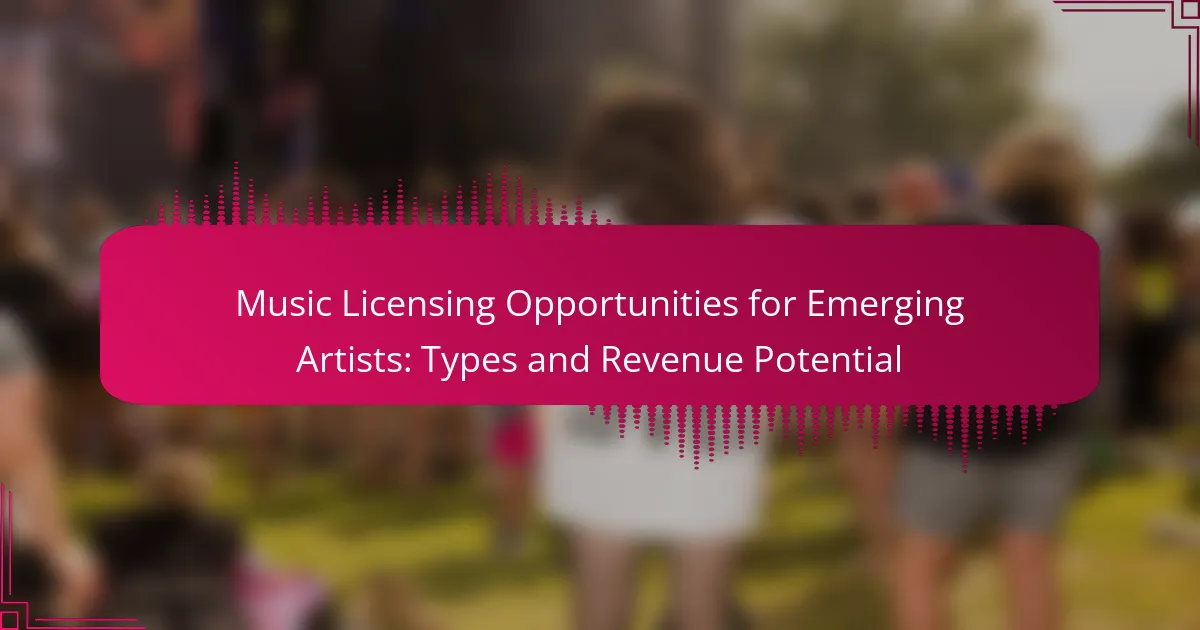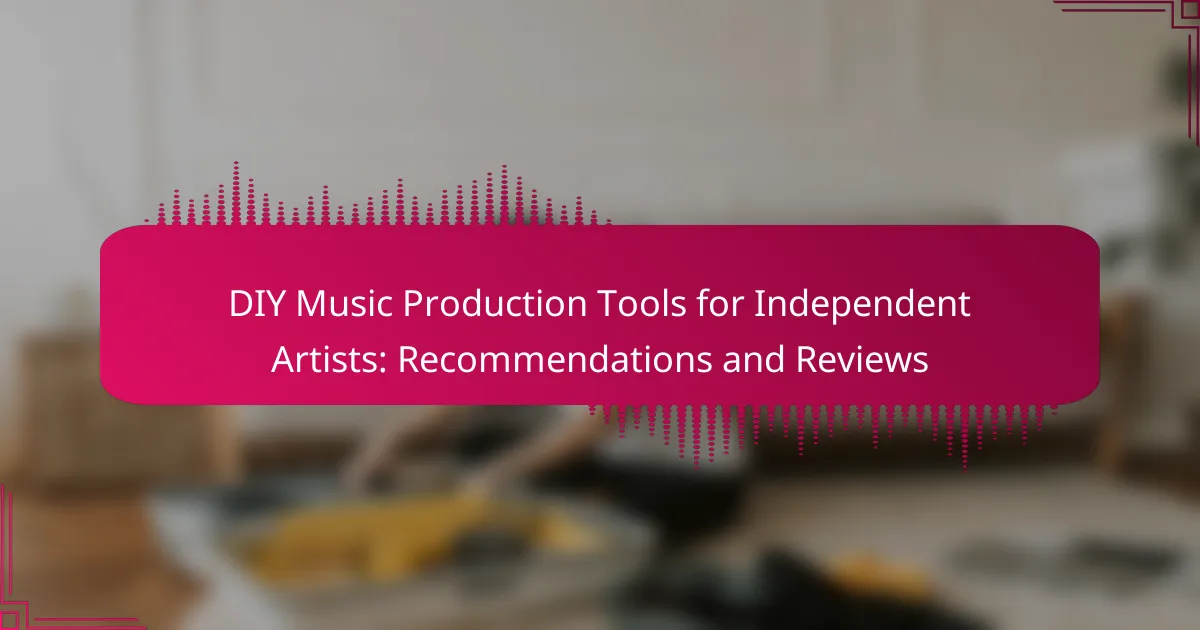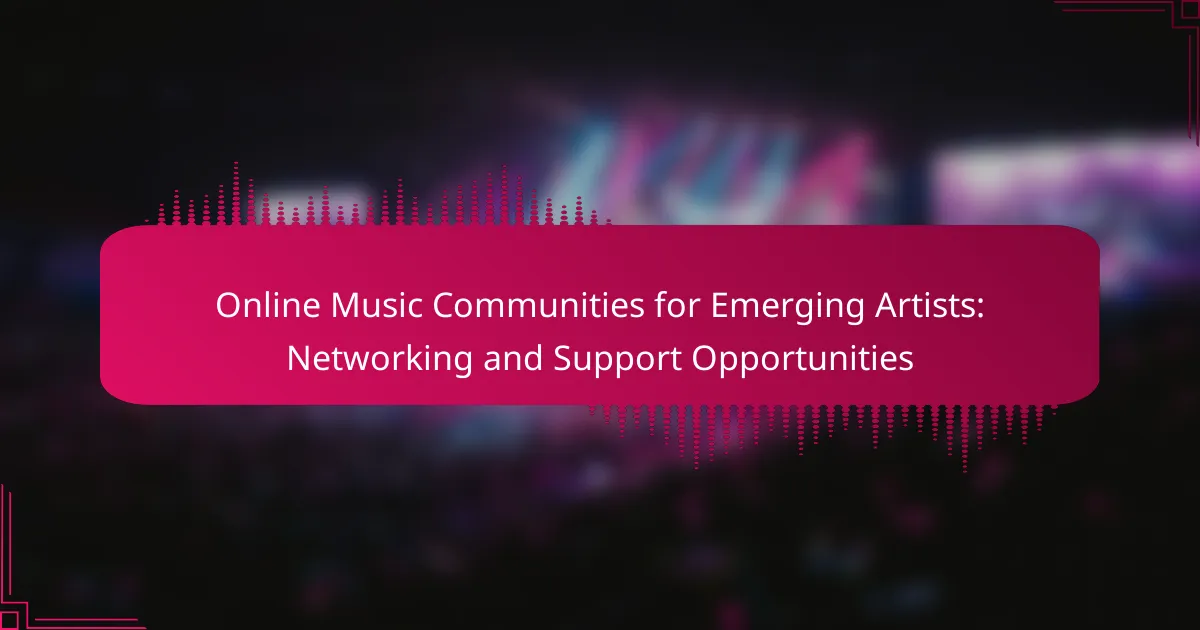Music festivals and showcases present independent artists with vital opportunities for exposure, networking, and performance. Major events like South by Southwest, Coachella, and Primavera Sound support emerging talent, while showcase events focus on artist-audience interaction. However, independent musicians face challenges such as funding limitations and fierce competition. Understanding financial factors and leveraging social media can enhance their festival experience and visibility.
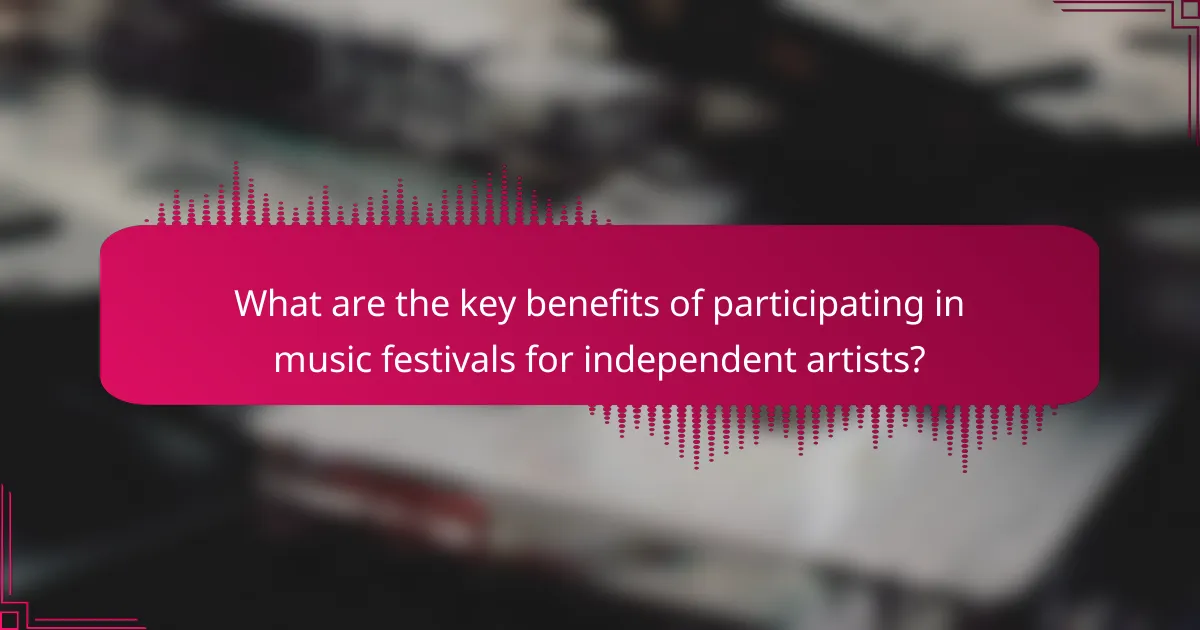
What are the key benefits of participating in music festivals for independent artists?
Participating in music festivals offers independent artists exposure, networking, and performance opportunities. Artists can showcase their talent to diverse audiences and industry professionals. Festivals often provide platforms for collaboration, leading to potential partnerships. Additionally, participation can enhance an artist’s credibility and boost their career visibility.
How do music festivals enhance visibility and audience engagement?
Music festivals enhance visibility and audience engagement by providing platforms for independent artists to showcase their talents. These events draw large crowds, increasing exposure and networking opportunities. Artists can connect with fans and industry professionals, leading to potential collaborations and future gigs. Additionally, festivals often feature social media promotions, amplifying reach beyond the event itself. Engaging performances can create memorable experiences, fostering a loyal fan base.
What networking opportunities do music festivals provide for emerging artists?
Music festivals provide significant networking opportunities for emerging artists. They connect artists with industry professionals, other musicians, and potential fans. Festivals often host panels, workshops, and meet-and-greets that facilitate collaboration and exposure. Additionally, performing at a festival can lead to valuable relationships with booking agents and record labels. These connections can enhance an artist’s visibility and career trajectory, making festivals crucial for independent musicians.
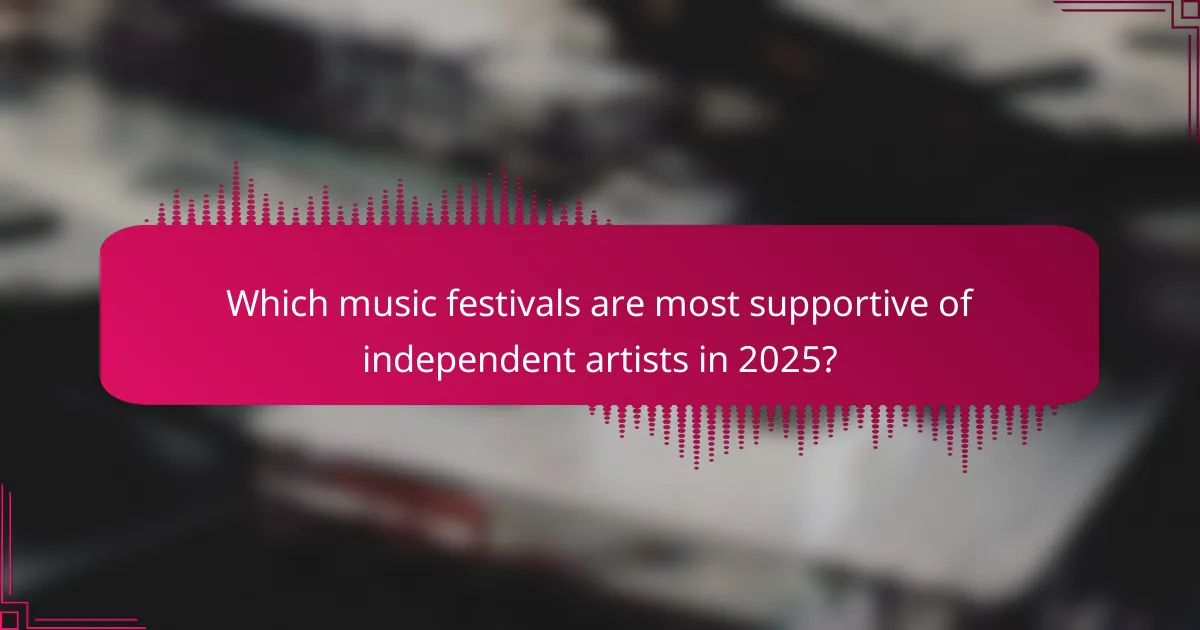
Which music festivals are most supportive of independent artists in 2025?
In 2025, festivals like South by Southwest, Coachella, and Primavera Sound are highly supportive of independent artists. These events provide platforms for emerging talent to showcase their music to diverse audiences.
South by Southwest (SXSW) focuses on promoting independent musicians through extensive networking opportunities and showcases. Coachella features a dedicated stage for up-and-coming artists, allowing them to gain visibility alongside established acts. Primavera Sound emphasizes inclusivity, providing a space for independent artists to perform and connect with industry professionals.
Other notable festivals include The Great Escape and Reeperbahn Festival, both known for their commitment to supporting emerging talent. These festivals create an environment that nurtures independent artists, enhancing their chances for success in the music industry.
What are the characteristics of artist-friendly festivals?
Artist-friendly festivals prioritize inclusivity, support for independent artists, and fair opportunities for exposure. These festivals often feature diverse lineups, affordable entry fees, and accessible platforms for performance. They may also provide resources such as mentorship, networking opportunities, and promotion through various channels. Many festivals actively engage with local communities, emphasizing collaboration and cultural exchange. Additionally, some festivals offer unique attributes like artist stipends or guaranteed performance slots, enhancing the experience for performers.
How do regional differences impact festival opportunities for independent musicians?
Regional differences significantly influence festival opportunities for independent musicians by shaping audience preferences and available resources. For instance, urban areas often host larger festivals with diverse genres, attracting wider audiences. In contrast, rural regions may feature niche festivals focused on local culture, providing unique exposure.
Additionally, local regulations and community support vary, affecting the feasibility of organizing events. Regions with strong music scenes typically offer better networking opportunities and collaborations. Economic factors also play a role; areas with higher disposable income may have festivals that can afford to book more prominent acts, enhancing visibility for independent artists.
Understanding these regional dynamics helps musicians strategize their festival participation effectively, maximizing their chances for success and audience engagement.
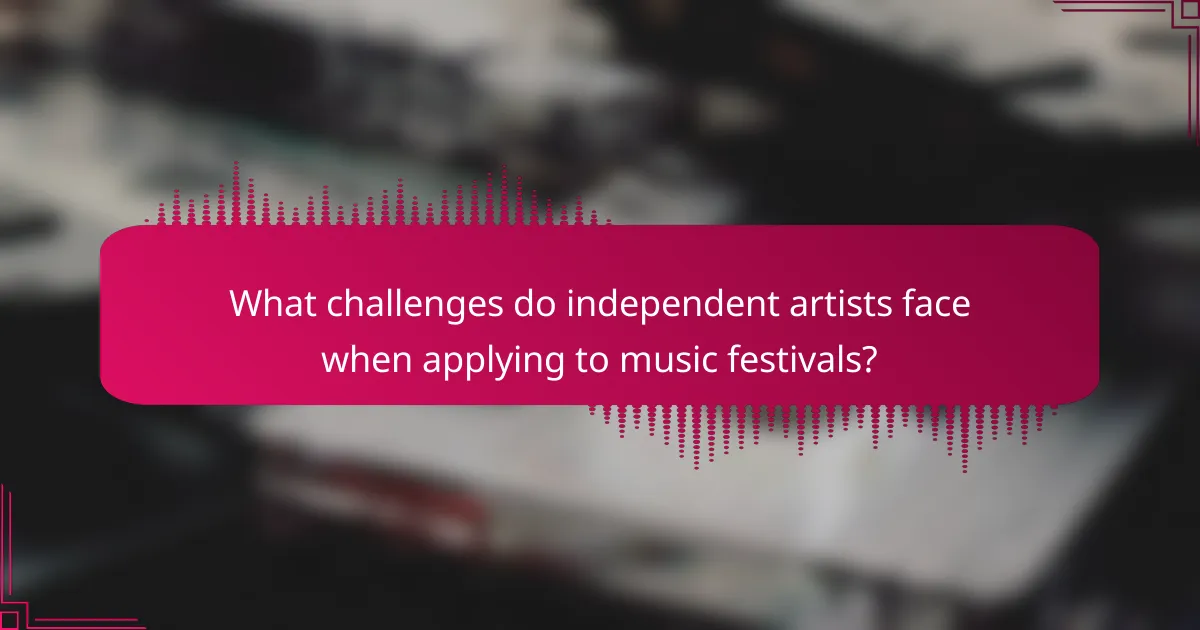
What challenges do independent artists face when applying to music festivals?
Independent artists face several challenges when applying to music festivals. Limited funding restricts their ability to promote themselves effectively. Competition is fierce, with many established acts dominating applications. Additionally, the lack of industry connections can hinder their chances of being selected. Many festivals prioritize mainstream artists, making it difficult for independent musicians to gain exposure. Lastly, the application process can be complex, requiring professional-quality materials that some independent artists may struggle to produce.
How can artists effectively navigate the application process?
Artists can navigate the application process for music festivals and showcases by thoroughly researching opportunities and tailoring their submissions. Focus on the festival’s unique attributes, such as genre preferences and audience demographics.
1. Identify suitable festivals and showcases that align with your music style.
2. Review application guidelines carefully, noting any specific requirements.
3. Craft a compelling artist bio and include high-quality recordings.
4. Highlight unique attributes of your music, such as innovative sounds or themes.
5. Submit applications well before deadlines to avoid last-minute issues.
6. Follow up politely to express continued interest and engagement.
By taking these steps, artists can enhance their chances of being selected and effectively showcase their talents.
What common pitfalls should artists avoid during festival submissions?
Artists should avoid common pitfalls like inadequate research, poor presentation, and missed deadlines during festival submissions. Research each festival’s requirements and tailor submissions accordingly. Ensure high-quality materials, including recordings and press kits, to make a strong impression. Additionally, adhere to submission deadlines to avoid disqualification.

How do showcase events differ from traditional music festivals?
Showcase events differ from traditional music festivals by focusing on artist exposure rather than large-scale entertainment. Showcase events prioritize networking opportunities for independent artists, allowing them to connect with industry professionals. In contrast, traditional music festivals emphasize performances for audiences, often featuring well-known acts and extensive production. Showcase events typically have smaller audiences and more intimate settings, fostering direct artist-audience interaction. This unique attribute enhances the chances for artists to gain visibility and potentially secure future gigs.
What are the unique advantages of showcase events for independent artists?
Showcase events provide independent artists with unique advantages such as increased visibility, networking opportunities, and potential collaborations. These events attract industry professionals, offering artists a chance to connect with agents, producers, and other musicians. Additionally, showcase events often feature diverse audiences, allowing artists to reach new fans and expand their listener base. The competitive atmosphere can also motivate artists to refine their performance skills and showcase their unique talents effectively.
Which showcase events are gaining traction in 2025?
In 2025, music festivals and showcases focusing on emerging genres and diverse cultural expressions are gaining traction. Events like the New Music Festival and Global Indie Showcase are attracting independent artists seeking exposure. These platforms emphasize inclusivity and innovation, providing unique opportunities for artists to connect with audiences and industry professionals. The rise of virtual components in these events also enhances accessibility, allowing broader participation.
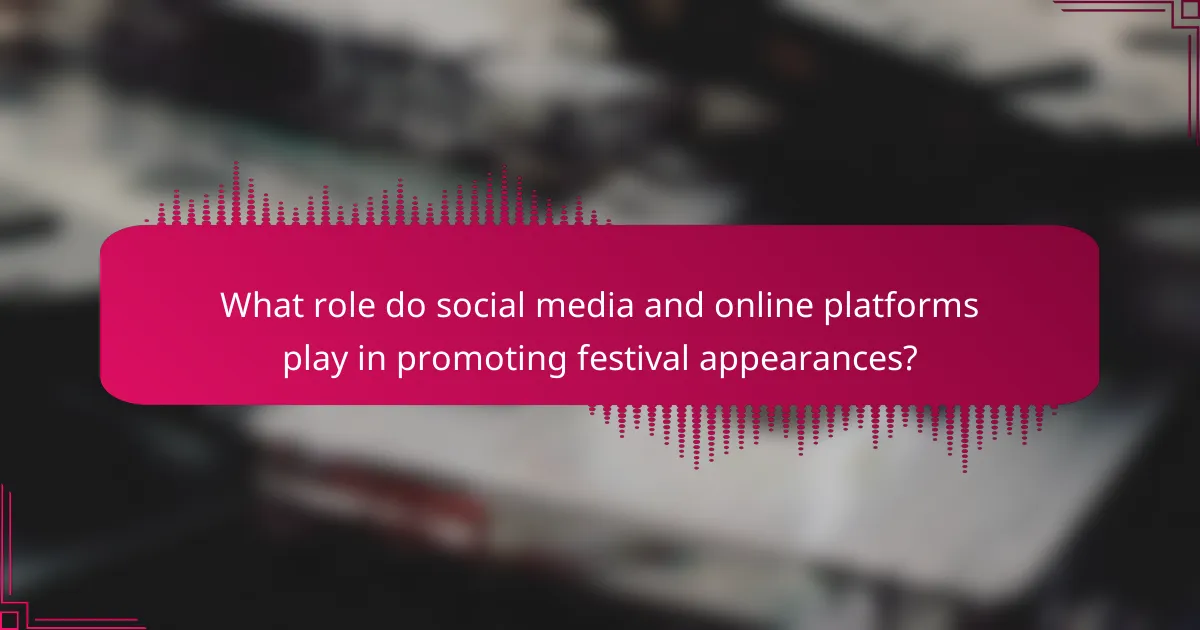
What role do social media and online platforms play in promoting festival appearances?
Social media and online platforms significantly enhance the visibility of independent artists at music festivals. These channels allow artists to share performances, engage with fans, and attract festival organizers. Platforms like Instagram and TikTok enable real-time audience interaction, increasing engagement and ticket sales. Additionally, artists can leverage user-generated content to build community and showcase their unique attributes, such as musical style and performance energy. By utilizing these platforms, independent artists can effectively promote their festival appearances and expand their reach.
How can artists leverage digital marketing to maximize their festival presence?
Artists can leverage digital marketing to enhance their festival presence by utilizing social media, email campaigns, and targeted advertising. Social media platforms like Instagram and TikTok allow artists to showcase their music and engage with fans, creating buzz around their performances. Email campaigns can keep fans informed about festival schedules and exclusive content. Targeted advertising helps reach specific audiences, increasing visibility and attendance. Engaging content, such as behind-the-scenes footage or live Q&A sessions, can also build a stronger connection with potential festival-goers.
What are the best practices for engaging audiences before, during, and after festivals?
Engaging audiences effectively before, during, and after music festivals involves strategic planning and execution. Prior to the event, utilize social media to build excitement and share artist lineups. During the festival, create interactive experiences, such as live polls or Q&A sessions, to enhance audience participation. After the festival, follow up with highlights, artist interviews, and audience feedback to maintain engagement and foster community. These practices enhance visibility for independent artists and cultivate a loyal fan base.

What are the financial considerations for independent artists participating in music festivals?
Independent artists must consider various financial factors when participating in music festivals. These include registration fees, travel costs, accommodation expenses, and potential revenue from merchandise sales.
Festival registration fees can vary significantly, often ranging from a few hundred to several thousand dollars. Travel and accommodation costs depend on the festival’s location and the artist’s home base. Additionally, artists should factor in expenses for promotional materials and equipment.
Revenue opportunities exist through merchandise sales, which can enhance overall profitability. Successful artists can also gain exposure, leading to future gigs and collaborations.
Budgeting effectively and understanding these financial considerations can help independent artists maximize their festival experience.
How can artists budget for festival costs effectively?
Artists can budget for festival costs effectively by prioritizing essential expenses and tracking all expenditures. Begin by estimating costs for registration fees, travel, accommodation, and promotional materials. Use a spreadsheet to monitor spending and identify areas to cut back. Research potential sponsorships or grants that can offset costs. Networking with other artists can provide insights on shared resources, reducing individual expenses. Lastly, always leave a buffer for unexpected costs, ensuring financial flexibility during festivals.
What funding opportunities exist for independent musicians in festival contexts?
Independent musicians can access various funding opportunities at music festivals through grants, sponsorships, and crowdfunding. Many festivals offer artist grants to support independent acts, while brands often sponsor artists to enhance their visibility. Crowdfunding platforms allow musicians to raise funds directly from fans. Additionally, some festivals provide performance fees or revenue-sharing models to support artists. These funding avenues enable independent musicians to showcase their talent and reach wider audiences.
What are the potential revenue streams from festival performances?
Independent artists can generate revenue from festival performances through ticket sales, merchandise sales, sponsorships, and streaming rights. Each source offers unique opportunities for financial gain.
Ticket sales provide direct income from attendees, while merchandise sales allow artists to capitalize on their brand. Sponsorships can enhance visibility and provide additional funding. Streaming rights can create ongoing revenue through digital platforms.
These revenue streams can significantly impact an artist’s financial health and growth in the music industry. The potential for diverse income sources is a unique attribute of festival performances, enabling artists to leverage their presence effectively.
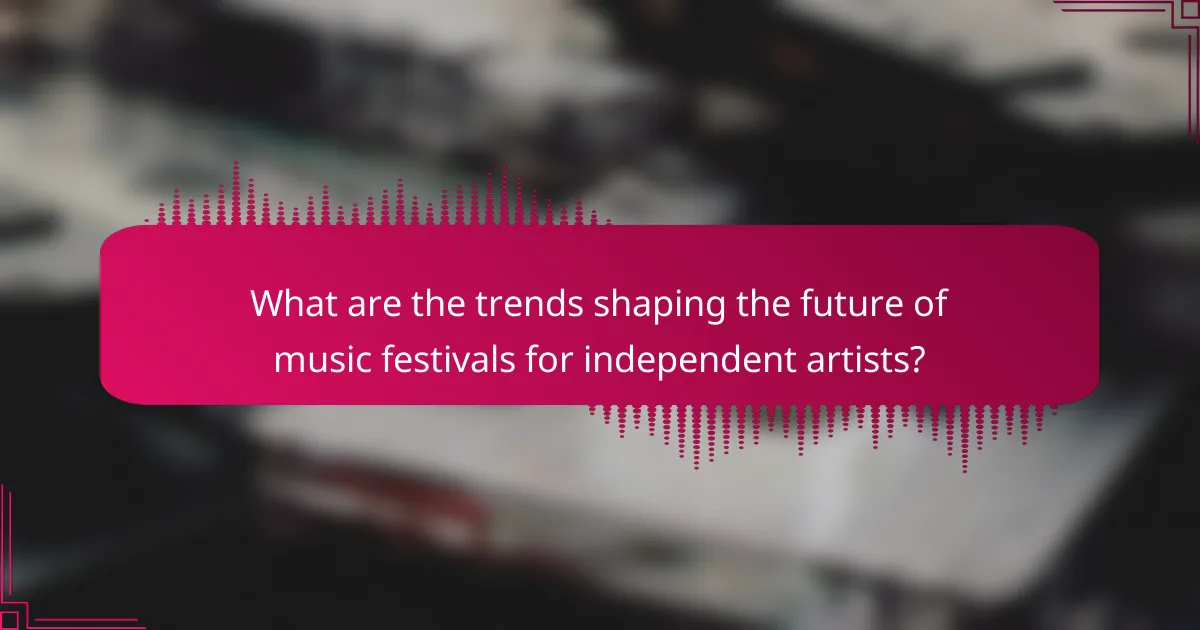
What are the trends shaping the future of music festivals for independent artists?
Emerging trends in music festivals are enhancing opportunities for independent artists. Increased use of technology, such as live streaming and virtual reality, allows artists to reach wider audiences. Sustainability is gaining traction, with festivals adopting eco-friendly practices that resonate with fans. Diverse genres and inclusive lineups are becoming standard, showcasing a broader range of talent. Additionally, collaboration with brands for sponsorships is providing financial support to independent artists. These trends collectively empower independent musicians, fostering a vibrant festival culture.
How is technology influencing the festival experience for artists and audiences?
Technology significantly enhances the festival experience for both artists and audiences. It provides platforms for independent artists to reach wider audiences and engage fans in innovative ways.
Digital tools enable real-time interaction through social media, allowing artists to connect with fans before, during, and after events. Streaming services and virtual reality experiences expand access to performances, breaking geographical barriers.
Data analytics helps organizers tailor experiences to audience preferences, optimizing lineups and scheduling. As a result, festivals can create more personalized and immersive experiences.
Emerging technologies like augmented reality offer unique engagement opportunities, enhancing the visual and auditory experience for attendees. These innovations are reshaping how music festivals operate, benefiting artists and audiences alike.
What emerging genres or styles are becoming popular in festival lineups?
Emerging genres like electronic, indie pop, and world music are gaining popularity in festival lineups. These styles offer diverse experiences, attracting a wider audience. Independent artists benefit from this trend by showcasing their unique sounds alongside established acts. Festivals increasingly highlight local talent, fostering community engagement and cultural exchange.
What sustainability practices are being adopted by music festivals?
Music festivals are increasingly adopting sustainability practices to reduce their environmental impact. These practices include waste reduction strategies, renewable energy use, and sustainable transportation options. For example, many festivals now implement recycling and composting programs to minimize landfill waste. Additionally, some events utilize solar power and other renewable energy sources to power stages and facilities. Sustainable transport initiatives, such as bike parking and shuttle services, encourage attendees to use eco-friendly travel methods. These efforts not only benefit the environment but also enhance the festival experience by promoting a responsible and conscious community.
What are the best strategies for independent artists to maximize their festival success?
Independent artists can maximize their festival success by focusing on strategic promotion, networking, and performance preparation. Building an online presence through social media and music platforms increases visibility. Engaging with festival organizers and fellow artists fosters valuable connections. Practicing and refining live performances ensures readiness to captivate audiences. Additionally, leveraging unique attributes, such as original sound or storytelling, can differentiate artists in a competitive environment.

